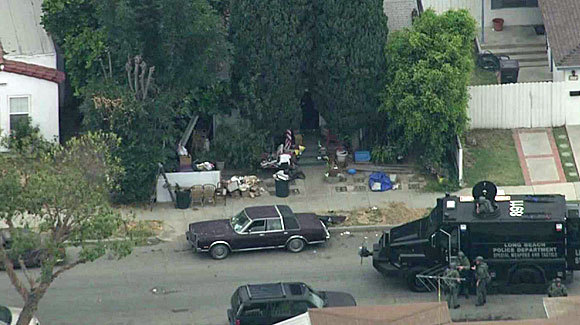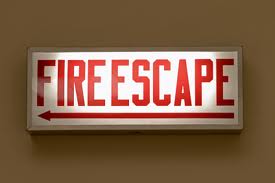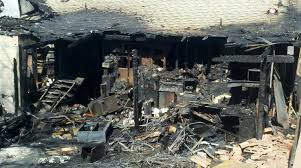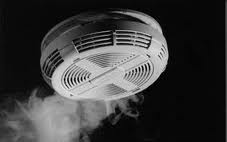Trapped in the Hoard
Without a doubt the number one concern of teaching firefighters about fires that occur in hoarding conditions is the potential of firefighters becoming trapped inside. While this potential is present on any type of fire, hoarding presents additional challenges. Understanding the potential for trouble should ensure all firefighters are visiting self rescue, lost orientation, and entanglement training monthly. Let’s face it, many of us will be lucky to review and practice these procedures yearly if at all. Let’s take a look at three processes you can review to prepare yourself.
Hoarding Concerns
As a persons home becomes full with belongings the amount of usable space is severely restricted. With this collection the potential for firefighters becoming lost inside increases. From day one most firefighters are taught orientation based on contact with a wall. Household clutter that extends well beyond arms length from the wall is common in the hoarding conditions. Firefighters who do not make adjustments for this danger can find themselves disoriented in a labyrinth of belongings, usually that have no secondary means of egress.
How can this happen? Does the firefighter not see the junk? Great questions, but there can be many factors that contribute to firefighters not seeing or suspecting clutter. One factor is where the home is located. If inside a municipal district there may be no visible clutter from the exterior. These hidden heavy content homes may not indicate clutter until entry. Secondly, the first room of entry my be free from clutter. In hoarding conditions not all rooms are completely packed full, there can be varying levels of stored items. If the room of entry is open the firefighter may assume the rest of the building is the same way.
Don’t waste time
Many firefighters ask how long they should wait before calling a mayday. In hoarding situations the time to call should be reduced. Why, because the length of time to rescue will be increased. If firefighters were to find themselves in the middle of clutter without means of orientation this is a true emergency. The amount of time before declaration of the mayday should be short.
Ideally the lost firefighter will have a search rope, TIC, and/or a hose line for orientation. If none of the potential life savers are present and you are disoriented call it……CALLL IT NOW!!
Some firefighters feel if they call a mayday without being in true life or death danger they can be ridiculed by other members once the fire is out. So what! At least you will be alive to take it. If you feel the need to search out secondary means of egress and/or a point for orientation without positively knowing the direction you can find yourself going towards bigger danger, especially if you choose to crawl over stacks of debris. In heavy content conditions that best path is inside the pre-made pathway established by the occupants.
If a firefighter does not feel the need from a mayday declaration they should begin with radio communication to inform everyone of the situation and request information that can help them become reoriented to their location or establish secondary means of egress. These communications should be short and to the point. The longer it takes to establish location the more air the firefighters will be using and less time to make an escape. Establishing air consumption rates and understanding how to function in a high stress situation can aid in the reestablishing orientation. If firefighters have even a small amount of doubt, CALL THE MAYDAY.
Entanglement Solutions
Inside cluttered conditions firefighters will find a variety of entanglement dangers. From large collection of Christmas Lights to wire from dryer vents ran for ferrets to travel room to room these challenges may be some that firefighters had never even thought of.
The most important variable in the entanglement equations is identification of there presence. Not crawling into a room with a collection of wires is the BEST solution to this problem. Making this seemingly simple statement more complex is the density and thickness of the smoke. Limited visibility can make this near impossible. Using the Thermal Imaging Camera (TIC) offers firefighters the tool to identify these situation. While scanning with the TIC firefighters should look for piles of wires, tubular shaped dryer style vents, multiple electric cords, and other challenges that can entangle them.
If a firefighter is to become entangled they must revert to solid training. Using techniques such as the swim move, grab and cut, are both options while remembering to not pull the entanglement tighter. Both of these techniques are commonly found in firefighter training manuals and require more time that allowed in this short blog. If you are not familiar with these techniques click Here and Here to watch short videos on managing entanglements.
Clearing Debris 
Whether before or after any firefighter emergency that happens inside a Heavy Content Environment will require the removal of debris. From simply moving a stack to the labor intensive task of moving massive piles clearing debris in a hostile environment comes with challenges.
First and foremost, is the workload on the firefighters. If the work is being completed inside a smoke field environment air consumption will be increase. Lower actual working times will require more firefighters to be available to perform the task of moving the debris. Key to knowing this problem is the identification of heavy content early in an operation to allow time for other firefighters to be on scene.
Second, is the potential for added weight to cause a localized collapse. When clearing debris to reduce or prevent a mayday firefighters need to understand that moving the weight of a stack to lay on top of another stack could be enough added weight to cause a collapse.
Example: Pile A has x amount of weight, while Pile B has x amount of weight. These piles have added weight slowly over many days and weeks allowing for the structure to adjust. Imagine if in a short amount of time the weight from pile A is put on top of pile B. In a matter of minutes you could have double the actual weight of pile B. The weight added could stress that area of the structure enough to cause a local or complete collapse.
It is important to understand this risk when working around the massive amounts of stuff inside a heavy content environment. When tasked with moving stacks of debris, whether for a mayday or not, firefighters should ensure the distribution of the weight is not piled in one central area that could already be near the collapse level. Spreading the weight over a larger area will help reduce the chances of collapse danger.
Ryan’s Advice
Fighting structural fires will always bring an amount of risk with it. When operating inside homes filled with massive amounts of content the risk will be higher. Firefighters need to understand the sheer volume of physical risk required to accomplish even the most simple tasks.
Prevention is the best advice for mayday situations. By using good situational awareness and common sense firefighters should manage the potential mayday causing situations. Use the pathways for transportation routes, keep the stacks in place, pay close attention to air consumption, and always suspect that adding more weight to an already weighted down building runs the risk of collapse.
Actionable Items
1.Review your mayday radio transmission
2.Ensure the purchase and upkeep of wire cutters
3.Review TIÇ use in identifying wires, cables, and other entanglement hazards
4.Practice swim technique












 Hoarding Fire Safety In the Kitchen.
Hoarding Fire Safety In the Kitchen. Hoarding Fire Safey
Hoarding Fire Safey
 How clean can it be. Hoarding Dangers
How clean can it be. Hoarding Dangers











